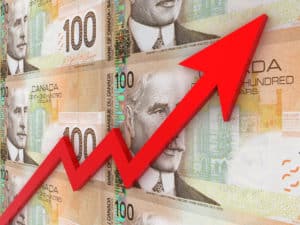The controversy surrounding Vermilion Energy’s (TSX:VET)(NYSE:VET) massive double-digit dividend yield of 12% continues to grow, especially as oil pulled back sharply on news of Trump placing a 10% tariff on US$300 billion of goods from China.
Vermilion is one of the few drillers to have maintained its dividend even after crude slumped sharply in late-2014.
Fears of a dividend cut are rising, despite Vermilion’s CEO Anthony Marino downplaying the risk of a cut and reassuring investors that the dividend is safe even if crude softens further.
Let’s take a closer look to see just how safe Vermilion’s dividend really is in the current operating environment.
How sustainable is the dividend?
It is easy to understand the worry surrounding Vermilion’s dividend. The sustainability of a dividend is typically measured by its payout ratio as a proportion of net income.
Vermilion’s payout ratio on a trailing 12-month basis is 122%, indicating that the dividend is unsustainable unless there is a significant increase in net income, which is unlikely because of oil’s ongoing weakness.
For capital-intensive industries such as upstream oil and gas production a better measure of sustainability is the dividend payout ratio as a function of funds flow or funds from operations (FFO).
When using this measure the payout ratio on a trailing 12-month basis falls to a very manageable 46%.
Nonetheless, this isn’t the most accurate representation of sustainability because it doesn’t exclude capital expenditures, which are a vital cost if production growth is to be maintained.
Once capital expenditures are deducted, the ratio on a trailing 12-month basis the ratio climbs to an unsustainable 132%.
For these reasons, it’s easy to understand why pundits believe that Vermilion will be eventually forced to cut the dividend to reduce the payout ratio to a more manageable level.
Vermilion’s 2019 guidance, which appears achievable after its solid second quarter results, gives us an indication as to whether the dividend and that monster double-digit yield is sustainable.
At the midpoint of that guidance, Vermilion expects to generate FFO of $6 per share which after deducting planned capital expenditures falls to $2.62 per share, giving the driller a dividend payout ratio of 105%.
These numbers are based on an assumed average annual Brent price of US$64.67 per barrel and US$57.32 for West Texas Intermediate, which are both higher than the current spot prices of US$61.89 and US$55.66 per barrel, respectively.
This indicates that the dividend could be in danger unless oil firms and rallies once again to be above those forecast prices.
While the dividend does appear sustainable over the short-term, a high payout ratio in excess of 100% amid a difficult operating environment where crude remains weak indicates that it can’t be sustained for a prolonged period unless oil firms and FFO increases.
Despite the optimism surrounding the outlook for crude earlier this year, the outlook for crude remains poor, particularly with the threat of a full-blown trade war between the world’s two largest economies the U.S. and China looming.
It is anticipated that China will retaliate for Trump’s latest round of tariffs. If a trade war emerges, it will crimp global growth causing demand for energy to decline sharply, leading to lower oil consumption and hence prices.
Nevertheless, if oil does weaken further, Vermilion has commodity hedges in place which will mitigate the financial impact if crude were to fall below US$50 barrel. That hedging strategy will further support the sustainability of the dividend over the short-term.
Foolish takeaway
Regardless of Vermilion’s CEO reassuring the market that the dividend will remain untouched and is fully funded, the numbers indicate that the payment maybe unsustainable over the long-term.
It is likely, however, that the payment will remain untouched for the foreseeable future because the driller possesses considerable financial flexibility created by its solid balance sheet.
If crude does fall further and remains weak for a sustained period, Vermilion may be forced to reconsider its stance on its dividend payment.








